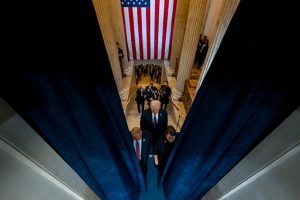A cryptocurrency crash that de-pegged the TerraUSD “stablecoin” from the US dollar and wiped $40 billion from investors’ holdings was caused by just seven traders, according to new research.
Analytics firm Nansen released a report on the downfall of Terra’s LUNA and UST tokens earlier this month, which refutes the popular claim that a hacker or malicious attack caused the crypto collapse.
“We refute the popular narrative of one ‘attacker’ or ‘hacker’ working to destabilise UST,” the report stated. [Our investigation] revealed that a small number of players identified vulnerabilities early into the UST de-peg.”
Nansen identified transactions between May 7 and May 11 that indicated large investors – known as “whales” in crypto jargon – appeared to lose faith in UST’s ability to remain pegged to the dollar, causing aggressive selling of the token on crypto exchanges.
ALSO SEE: Stablecoin Crash That Shook Crypto: All You Need to Know
Exploited Peg to Stablecoins
“We also identified a list of seven wallets most likely to have played a significant role in the UST de-peg,” the report stated.
The research suggests these players exploited the “relatively shallow liquidity” of the pools securing the TerraUSD peg to other stablecoins by withdrawing UST funds and swapping significant amounts of UST to other stablecoins.
They then arbitraged inefficiencies between various pricing sources by buying and selling positions within centralised and decentralised.
“As such, we refute the popular narrative of one ‘attacker’ or ‘hacker’ working to destabilise UST,” Aurélie Barthère, Nansen’s principal research analyst, and her colleagues wrote in the report.
“The de-peg of UST could instead have resulted from the investment decisions of several well-funded entities, e.g. to abide by risk management constraints or alternatively to reduce UST allocations … in the context of turbulent macroeconomic and market conditions.”
The crash contributed to a market-wide downturn, which saw bitcoin, ethereum and other leading cryptocurrencies to fall to 18-month price lows.
- George Russell
READ MORE:
Popular NFT Game Stepn Cuts Off China Users – CryptoSlate
Hong Kong’s Babel Defies Crypto Rout With $80m Fundraising
Davos ‘Old Guard’ Greets Crypto Newcomers With Scepticism
Trash-Talking Crypto ‘Whiz’ Created a $40bn Crash – NYT






















